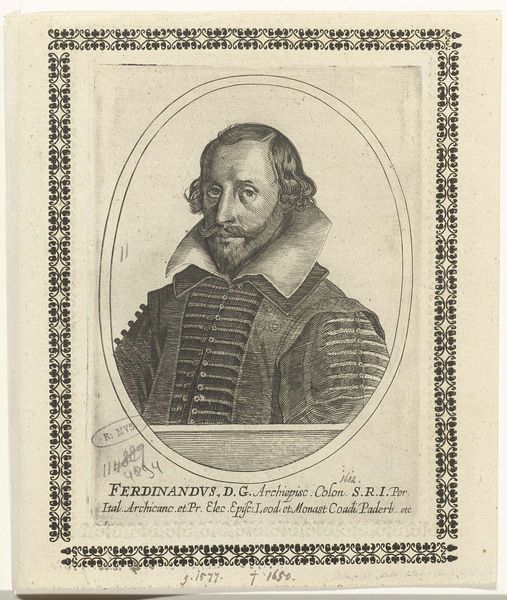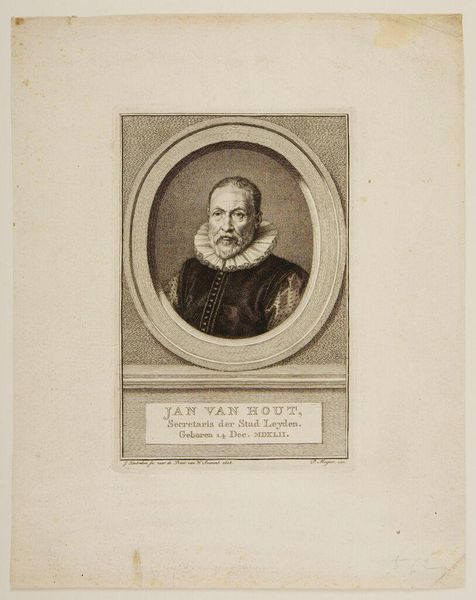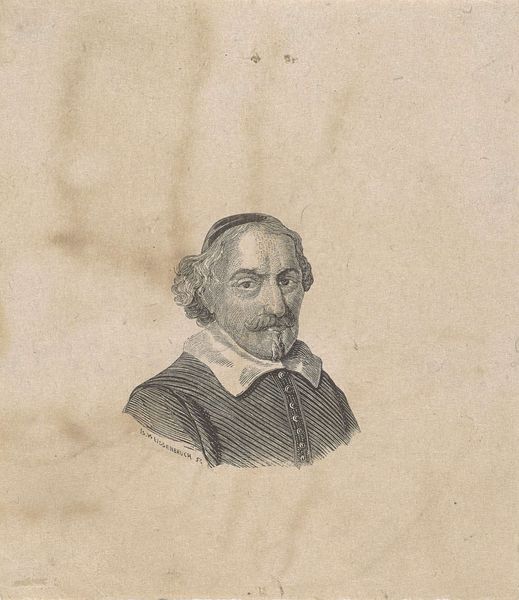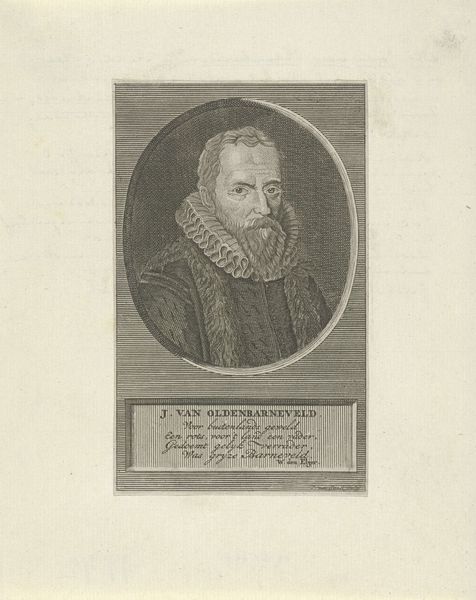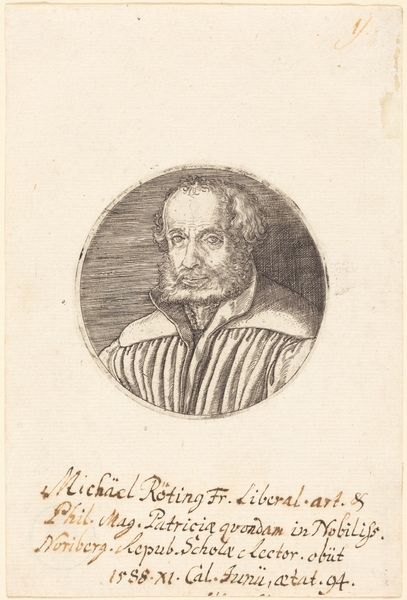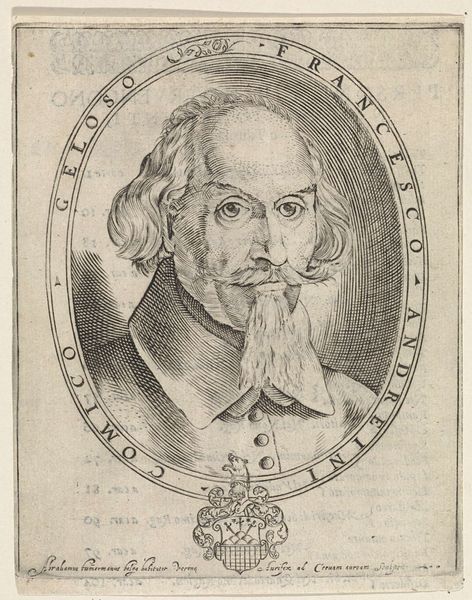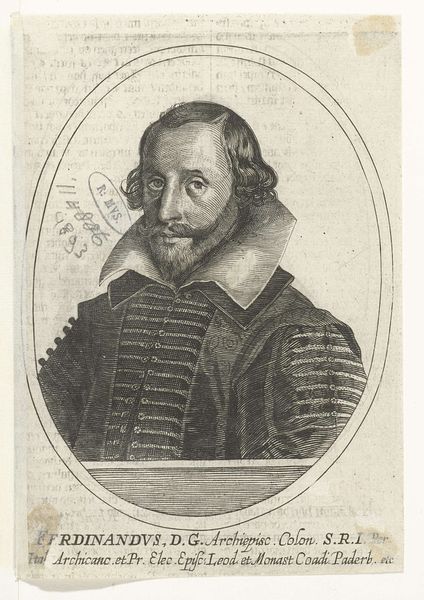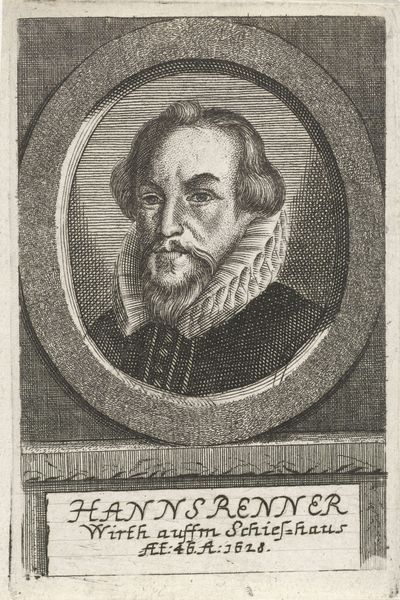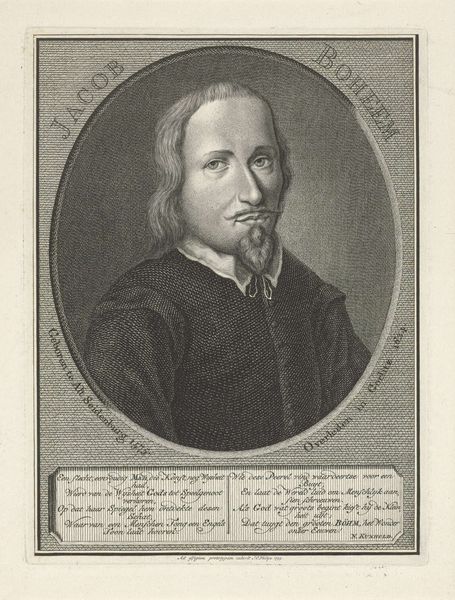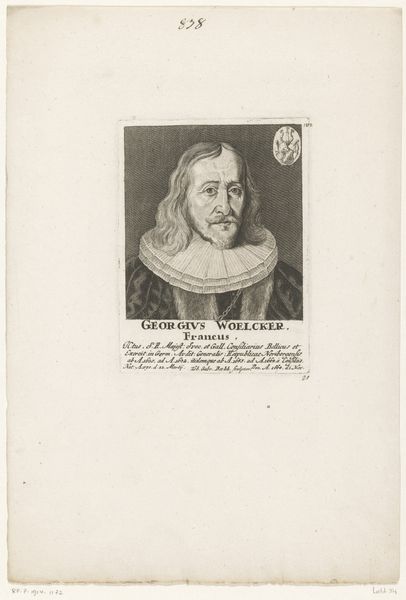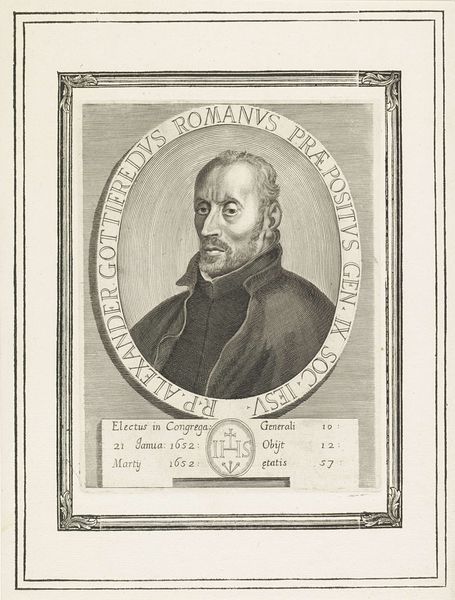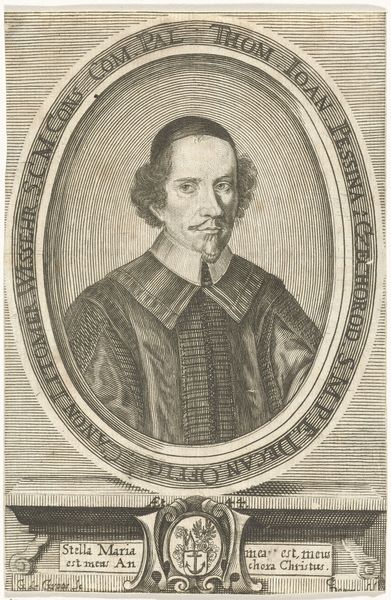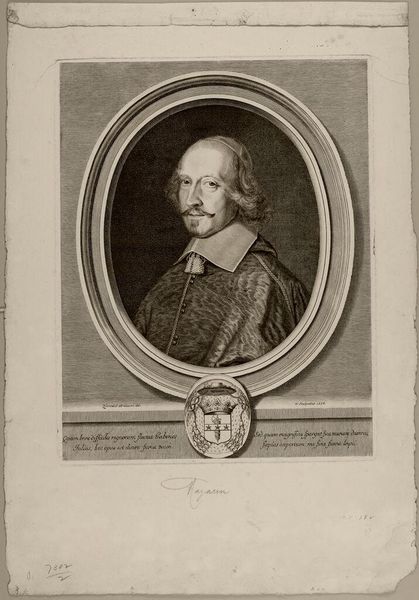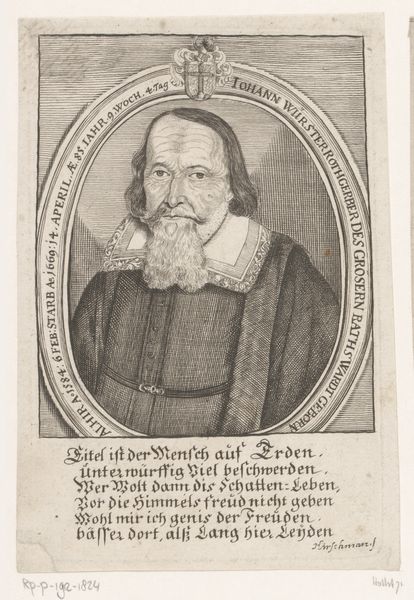
print, etching
#
portrait
#
neoclacissism
# print
#
etching
#
history-painting
#
academic-art
Dimensions: height 190 mm, width 140 mm, height 107 mm, width 79 mm
Copyright: Rijks Museum: Open Domain
Curator: Here in the Rijksmuseum, we’re looking at a print from 1776 by Charles Dominique Joseph Eisen. It's a portrait titled "Portret van Jacobus Francquart." Editor: The first thing that strikes me is the texture. Even though it's a print, there's such delicate hatching that gives the surface a surprising depth. What kind of statement was Eisen trying to make through the texture and medium here? Curator: Well, as an etching, it's inherently about reproduction, about disseminating the image of Francquart to a wider public. Eisen, working during the Neoclassical movement, was likely interested in reviving historical and academic art approaches; printmaking enabled this dissemination of artistic ideals. It was also a very efficient process in order to portray people en masse, therefore democratization. Editor: Democratization yes, but I’m still stuck on the materiality. It is black ink printed onto a blank sheet. A really intimate method that also keeps things very precise. Does it represent a desire for a simpler life away from the French decorative overload? Is this an active move? Curator: It's more about reclaiming a certain civic virtue and the ideal of the Enlightenment, which found expression in many different visual styles across Europe. This print would have circulated among educated circles interested in architecture as Francquart was an architect for Brussels. Eisen shows Francquart wearing somber dark clothing against a very slightly clouded background; as if ennobling and promoting a new breed of academics. The print literally embodies Neoclassical aesthetic and the revival of simpler times with limited shades that do away with Rococo lavishness and focus instead on clean contours. Editor: I suppose I am always drawn to how such printed material can both reproduce images while allowing artists agency over their circulation and, therefore, their social relevance. You could touch this. Have it. In a sense, such objects are a tactile, hands-on experience, one step away from art history to material history. Curator: That's an interesting observation. Looking at the impact and purpose behind Eisen's etching as it circulated amongst eighteenth century Brussels intellectuals offers clues of what was stirring within and in society, one also can assess that printmaking as the chosen artistic form wasn’t merely arbitrary, but carefully selected with intentional political implication. It shows what these groups were thinking, sharing and who their muses and thinkers were! Editor: Right, well, this really made me think about not just art historical but the active social forces at play. Curator: And for me, it re-emphasizes how even in something as "simple" as a print, the intersection of medium, artistry, and sociopolitical context creates a complex and compelling object of study.
Comments
No comments
Be the first to comment and join the conversation on the ultimate creative platform.
